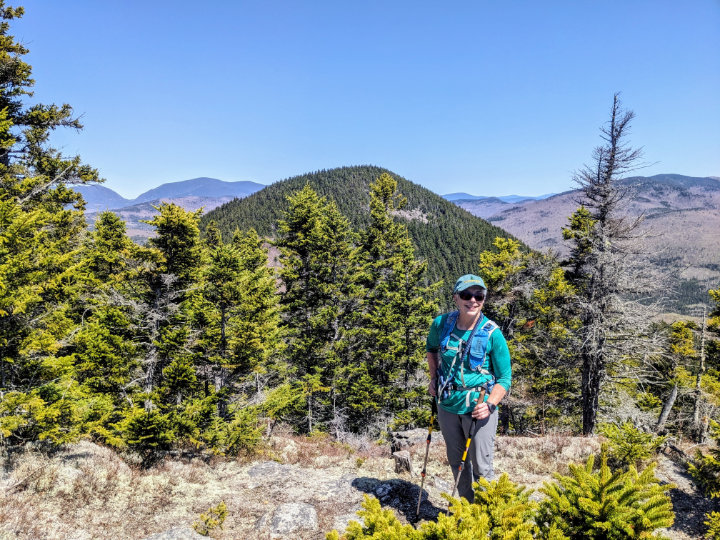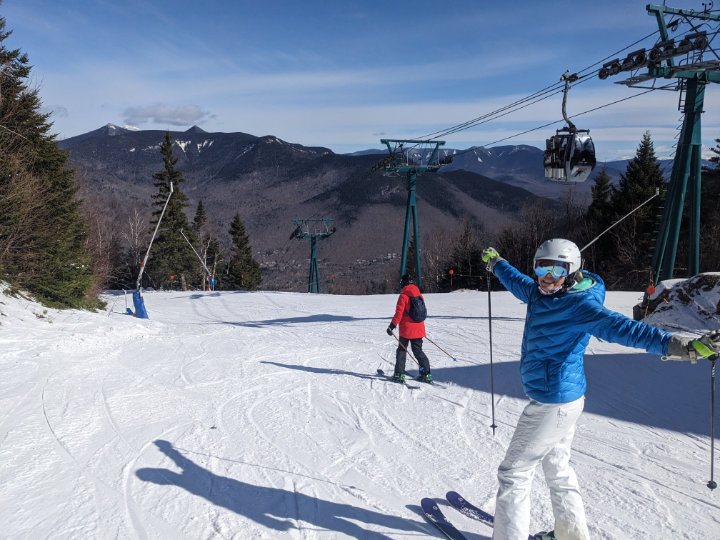Winter Carnival
by Robert Hanaford Smith, Sr.
Weirs Times Contributing Writer
Carnival is defined as an organized program for entertainment or exhibition. New Hampshire residents have long used the winter carnival as a means of turning the ice and snow of the season into fun and competitive activities.
One of the past carnivals was the one held in Laconia in the year 1923. “On a cold morning in February, to be exact, the 10th, at 5 o’clock in the morning, a few, tired, sleepy, and cold lads and lassies were pulled out of bed, given a warm breakfast by Miss Caswell, and departed, midst fast falling snow flakes on an open four-horse sled, driven by Mr. George Dicey and Mr. Henry Plastridge, for Laconia.” Those lads and Lassies were from the New Hampton Literary Institution and the quotation is from the school’s magazine, The Hamptonia. The article states that though the New Hampton students arrived late for the ski jumping event that was held in Lakeport, the officials allowed them to compete. Howard Gwynne Dyer represented the school in what was described as the “…high and strange jump.” He was allowed three scoring jumps, and he increased his distance in each of the second and third jumps, reaching distances of 39 feet, 42 feet six inches, and what was described as a “ superhuman jump”, the longest of the day, at 48 feet. Dyer, however, placed second in the event instead of first, because he was penalized for breaking the rules. In what was perceived as an act of bravery, he tried to do a somersault, unsuccessfully, but without injury. Another New Hampton student, Jerome Gordon, won second prize in the 440 ski race and third prize in the mile race. Margaret Dicey, described by The Hamptonia as “…one of the greatest of our students, a girl…” also placed in high positions in ski racing, as she won second prize in the hundred yard and third prize in the fifty yard race. Their return trip to New Hampton was said to be much like the trip into Laconia with many of the passengers walking every other mile to keep warm. The reporter wrote “…we reached home cold but happy, and glad to get into the nice warm bed at 3 o’clock in the morning…”.
The 1927 Laconia Winter Carnival was the ninth annual one and began on a Saturday, February 19, with the wood chopping contest which was won by Raymond Wescott of Winnisquam. An egg boiling contest held between Boy Scout troops was won by Dan Wooldridge and Morris Kidder was victorious in the pie-eating event. The 1927 carnival ended with a costume parade which was followed by a huge bonfire at the Pearl Street grounds. Miss Ruth Gilman of Academy Street won the costume contest, being Miss Winter in a snow-white costume. Second place was won by Albert Snow of Gilford Avenue who entered as a comic clown, and Uncle Sam, portrayed by Hazel Fortin of Garfield Street took the third prize. The carnival’s sled dog races attracted an audience of about 15,000 people and the winning musher was Hi Mason of Tamworth. The ski jumping contest was won by Raymond Jacques with Alphy Morin being a close second. Skaters competed for the Northern N.E. Championships at the municipal rink on Pearl Street with over 8,000 spectators. Miss Ruth Eleanor Morrison of Court Street was elected to be the Carnival Queen.

The 1928 winter carnival was run by the Winnipesaukee Ski Club towards the end of the month of February with good weather for the event. The ski jumping contest took place at the Mechanic Street jump with Holman Finlay of the Colebrook Country Club taking the first prize in that event. A ski jumping exhibition was presented by a former Dartmouth College star, and Laconia resident, Dick Bowler. Bowler was successful in doing a somersault on skis, the dangerous stunt that was unsuccessfully tried by Dyer at the 1927 carnival. Winners at the 1928 carnival included Miss Melba Keasor in the women’s ski race, Henry Levasseur in the men’s ski sprint race, and Paul Bannon in the juvenile sled dog race. Bannon drove a German police dog named “Pola”. The contest for the Belknap County champion wood chopper took place at the Pearl Street grounds and Bradley Wallace of Sanborn Street won the title.
Looking back to the year 1900, a late February event took place indoors and was labeled a Winter Fair. It was sponsored by the Rebekahs and was held at the opera house in Lakeport on the evenings of Wednesday, Thursday, and Friday. In preparation for the event, the ladies of the Rebekahs had thimble parties at the homes of the members at which they made articles to sell at the fair. A different type of entertainment was presented each evening of the fair with the first evening being a mixed literary and musical program. The News and Critic newspaper of Laconia described the second evenings’ program as “…a recital by the pupils of Mrs. J.E. Wilson, which promises to be very interesting.” Friday evening the program consisted of “…an amateur minstrel company, composed of some of our leading ladies and gentlemen.” Committees involved in planning the winter fair included those in charge of decorations and fancy articles, the apron table, ice cream, and the candy table.
Other Winter Carnivals and similar events have long been held in New Hampshire, including the Dartmouth College Winter Carnival and the ones held in Alton. The News and Critic in that month of February in 1900 wrote that “ The entertainment given by the Glass Blowers during the past week at the opera house, under the auspices of Cocheco Lodge, No, 28, K. of P., cannot be spoken of too highly. They were of a high character, sometimes amusing, always instructive, and it would be a pleasure for everyone to meet them again in Alton some time in the near future.”
Robert Hanaford Smith, Sr. lives in New Hampton.




